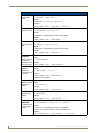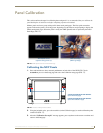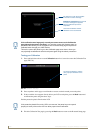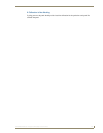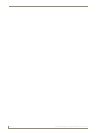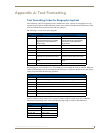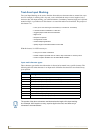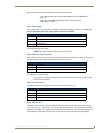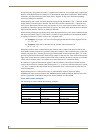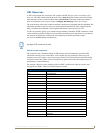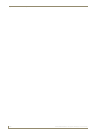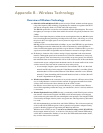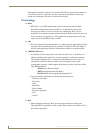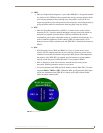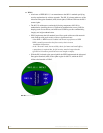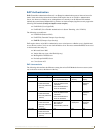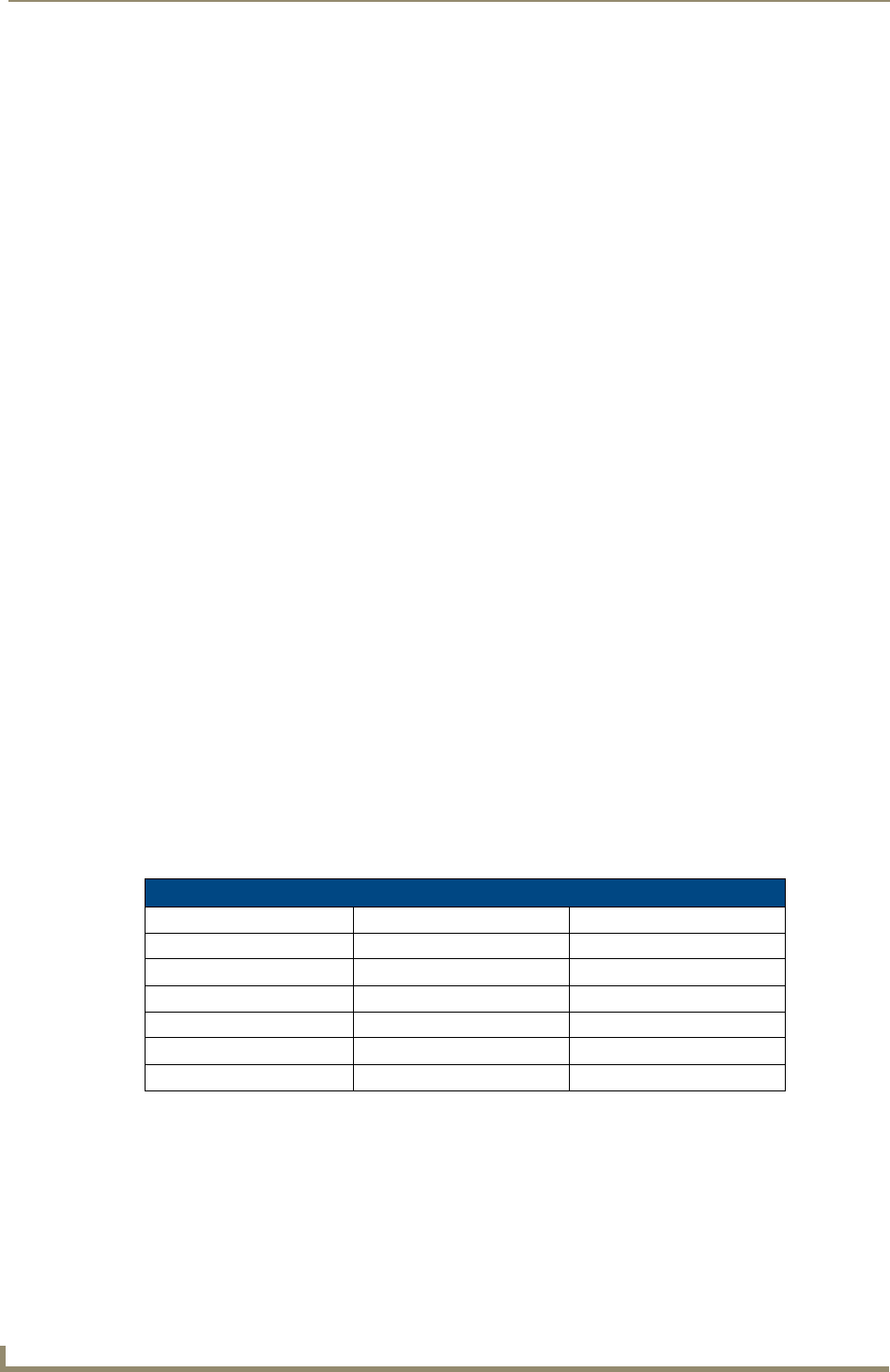
Appendix A: Text Formatting
166
MVP-8400i Modero Viewpoint Wireless Touch Panels
A keyboard entry using normal text entry is straightforward. However, once an input mask is applied, the
behavior of the keyboard needs to change to accommodate the input mask's requirement. When working
with masks, any literal characters in the mask will be "skipped" by any cursor movement including
cursor keys, backspace, and delete.
When operating with a mask, the mask should be displayed with placeholders. The "-" character should
display where you should enter a character. The arrow keys will move between the "-" characters and
allow you to replace them. The text entry code operates as if it is in the overwrite mode. If the cursor is
positioned on a character already entered and you type in a new (and valid) character, the new character
replaces the old character. There is no shifting of characters.
When working with ranges specified by the [] mask, the keyboard allows you to enter a number between
the values listed in the ranges. If a user enters a value that is larger than the max, the maximum number
of right-most characters is used to create a new, acceptable value.
Example 1: If you type "125" into a field accepting 0-100, then the values displayed will be
"1", "12", "25".
Example 2: If the max for the field was 20, then the values displayed will
be "1", "12", "5".
When data overflows from a numerical field, the overflow value is added to the previous field on the
chain, if the overflow character was specified. In the above example, if the overflow flag was set, the first
example will place the "1" into the previous logical field and the second example will place "12" in the
previous logical field. If the overflow field already contains a value, the new value will be inserted to the
right of the current characters and the overflow field will be evaluated. Overflow continues to work until
a field with no overflow value is set or there are no more fields left (i.e. reached first field).
If a character is typed and that character appears in the Next Field list, the keyboard should move the
focus to the next field. For example, when entering time, a ":" is used as a next field character. If you hit
"1:2", the 1 is entered in the current field (hours) and then the focus is moved to the next field and 2 is
entered in that field.
When entering time in a 12-hour format, entry of AM and PM is required. Instead of adding
AM/PM to the input mask specification, the AM/PM should be handled within the NetLinx code. This
allows a programmer to show/hide and provide discrete feedback for AM and PM.
Input mask output examples
The following are some common input masking examples:
Output Examples
Common Name Input Mask Input
IP Address Quad [0|255]{.} Any value from 0 to 255
Hour [1|12]{:} Any value from 1 to 12
Minute/Second [0|59]{:} Any value from 0 to 59
Frames [0|29]{:} Any value from 0 to 29
Phone Numbers (999) 000-0000 (555) 555-5555
Zip Code 00000-9999 75082-4567



